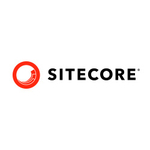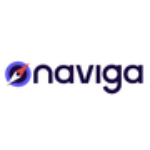TechnologyCounter provides genuine, unbiased real user reviews to help buyers make informed decisions. We may earn a referral fee when you purchase through our links, at no extra cost to you.
List of 15 Best Content Distribution Software
Showing 1 - 15 of 20 productsBuffer is a social media management tool that helps individuals and businesses plan, schedule, and publish content seamlessly across multiple platforms. With its user-friendly interface and powerful features, Buffer allows users to effortlessly manag...Read Buffer Reviews
MailChimp is a leading email marketing platform that helps businesses of all sizes engage with their customers through personalized emails and targeted campaigns. With its user-friendly interface and powerful features, MailChimp has become a go-to ch...Read MailChimp Reviews
Outbrain is a leading content discovery platform that connects publishers, advertisers, and audiences to drive engagement, brand awareness, and revenue. With its powerful technology, Outbrain recommends personalized content to over a billion people e...Read Outbrain Reviews
WiseStamp is a email signature solution for professionals and businesses alike. Boost your online presence, stand out from the crowd, and make a lasting impression with every email you send. With WiseStamp, creating a sleek and professional email sig...Read WiseStamp Reviews
Looking for a powerful email marketing tool? Look no further than Constant Contact. With its user-friendly interface and extensive features, Constant Contact is the go-to choice for small businesses, nonprofits, and individuals looking to connect wit...Read Constant Contact Reviews
AddThis is a is a tool that simplifies the process of sharing and distributing content across various digital platforms, making it easy for businesses and individuals to connect with their audience in an engaging and effective manner. With its user-f...Read AddThis Reviews
Content Hub is a platform for managing and distributing all your digital content seamlessly! Say goodbye to the hassle of juggling multiple tools and let Content Hub do the heavy lifting for you. With its user-friendly interface features, your conten...Read Content Hub Reviews
Scompler is a all-in-one tool for streamlining your workflow and boosting productivity. Say goodbye to scattered documents and endless tasks with our user-friendly platform designed to simplify complex projects. With Scompler, efficiency and organiza...Read Scompler Reviews
Content Controller is a solution for managing and organizing digital content. This innovative software streamlines content management processes, boosting efficiency and productivity. Say goodbye to scattered files and folders, and hello to a seamless...Read Content Controller Reviews
Infoasset is a tool for all your data management needs. With its user-friendly interface, advanced features and top-notch security, Infoasset streamlines your data management process and empowers you to make better, data-driven decisions. Say goodbye...Read Infoasset Reviews
AddToAny, the user-friendly share button and social media tool, allows your content to be easily shared on various platforms with just one click. With its seamless integration and customizable options, AddToAny simplifies the process of sharing and b...Read AddToAny Reviews
InPowered is a platform that revolutionizes the way brands connect with their customers. Through the use of advanced technology, InPowered harnesses the power of consumer-generated content to drive authentic engagement and deliver impactful results f...Read inPowered Reviews
- What Is Content Distribution Platform?
- Top Reasons Why Businesses Need Content Distribution Platform?
- What Are the Top Key Features of Content Distribution Platform?
- What Are the Top Benefits of Content Distribution Platform?
- What Are the Steps to Choose the Right Content Distribution Platform?
- What Are the Types of Content Distribution Platform for Different Industries?
- What Are the Technology Trends for Best Content Distribution Platform?
- What Are the Deployment Options for Content Distribution Platform?
What Is Content Distribution Platform?
A content distribution platform refers to a technological infrastructure utilized for the purpose of disseminating material across several websites. Content distribution software refers to the process of disseminating content across several websites or platforms with the primary objective of augmenting its reach and visibility.
Content distribution platforms have the potential to optimize the dissemination of content or messages, enabling individuals to reach a larger audience in a shorter period of time compared to previous methods. Content distribution systems have the capability to disseminate content over several channels, which may include social media platforms and websites, depending on the specific platform being utilized.
Video content distribution network facilitates the rapid replication and distribution of material, enabling marketers to efficiently and expeditiously reach their intended audience. Material distribution systems can also serve the purpose of targeting particular audiences and monitoring the efficacy of one's material.
best content distribution software facilitates the convenient assessment of content performance and enables the monitoring of viewership metrics. The utilization of this data has the potential to facilitate the development of enhanced content initiatives, hence enabling a broader reach and engagement with a larger audience.
By analyzing data, one is able to discern the type of material that is resonating with the audience and gain insights into the most effective strategies for engaging the desired target audience.
Top Reasons Why Businesses Need Content Distribution Platform?
1. Content distribution platforms play a vital role in enhancing organizations' ability to effectively engage with potential clients.
2. The technology provides a rapid and effective means of accessing a broader spectrum of individuals within a limited temporal scope.
3. The utilization of this technology facilitates the dissemination of corporate content to a worldwide demographic.
4. The utilization of video content distribution networks allows enterprises to effectively observe and evaluate the efficacy of their content across various channels.
5. The provision of important insights into the target audience is a key benefit for enterprises.
6. The utilization of many channels and technologies enhances the dissemination of material to a wider audience.
7. Content marketing strategies can be effectively evaluated by organizations through the utilization of this tool.
8. The utilization of a distributed content delivery network enables enterprises to efficiently oversee and enhance their content marketing endeavors.
9. Distributed content management system offers businesses the capability to generate tailored content that caters to a certain target demographic.
10. The expansion of market reach is beneficial for businesses as it enables them to access a broader segment of their intended consumer base.
11. The best content distribution software is made more efficient in terms of time and effort reduction.
12. The utilization of digital content distribution software enables enterprises to effectively track and evaluate the efficacy of their content across various channels.
13. The utilization of this tool enables firms to adapt and reuse their content across many platforms.
14. The utilization of shared information facilitates the establishment of client interactions for enterprises.
15. Video content distribution network provides organizations with the capability to develop compelling content experiences tailored to their intended audience.
What Are the Top Key Features of Content Distribution Platform?
1. Advanced Targeting Capabilities: The capacity to segment the audience and effectively target individuals with appropriate messaging.
2. Intuitive User Interface: The user interface is designed to be user-friendly and intuitive, facilitating efficient content sharing for users.
3. Automated Content Distribution: The process of automatically delivering appropriate content to specific individuals, at the appropriate moment.
4. Comprehensive Reporting: Monitor and evaluate the effectiveness of content dissemination campaigns.
5. Integrations: The capacity to seamlessly interact with several prominent platforms, such as social media, analytics tools, email marketing software, and additional systems.
6. Security & Compliance Controls: Ensure the safety and compliance of users by implementing suitable security and compliance measures.
7. Centralized Management: The implementation of centralized control mechanisms for content management, user access, and settings.
8. Multilingual Support: The capacity to engage with a diverse international audience through the provision of multilingual support.
What Are the Top Benefits of Content Distribution Platform?
1. Improved Authority: The implementation of the best content distribution platform has the potential to enhance the credibility and influence of a website, so fostering a heightened level of confidence among search engine algorithms. Consequently, this can lead to improved rankings in search engine results.
2. Increased Audience Reach: Video content distribution networks facilitate the expansion of publishers' audience reach through the consolidation of content from many partner sources. This phenomenon enhances the perceptibility of content, resulting in a greater number of readers and prospective buyers.
3. Targeted Traffic: The utilization of a distributed content delivery network facilitates the ability of marketers to strategically focus their efforts on particular demographic segments, hence enhancing the precision and efficacy of their advertising campaigns.
4. Automated Platforms: The best content distribution software offers automatic publishing capabilities, facilitating efficient content management across several websites, social media accounts, and applications.
5. Cost Savings: Content distribution platforms are considered to be a financially efficient marketing strategy since they provide marketers with the opportunity to disseminate their content across several channels without incurring individual costs for each site. This strategy aids in mitigating the expenses associated with cost-per-click charges for targeted advertising campaigns.
6. Increased Conversion Rates: Digital content distribution software significantly enhance conversion rates as a result of their extensive reach and ability to target specific audiences. Consequently, this phenomenon engenders increased sales and clicks, thereby yielding augmented revenue.
7. Improved Brand Awareness: Through the dissemination of content across several internet platforms, marketers have the ability to augment the visibility of their brand, hence resulting in heightened consumer consciousness.
8. Boosted ROI: The utilization of content distribution platforms has the potential to greatly enhance the return on investment derived from a marketing campaign, hence enhancing the total profitability.
What Are the Steps to Choose the Right Content Distribution Platform?
1. Determine Your Goals: Initially, it is necessary to ascertain the objectives associated with the dissemination of content. Are you seeking to target a certain demographic, disseminate information about a product or service, or optimize audience interaction? The process of clarifying your objectives will facilitate the identification of the most suitable platform for your content.
2. Understand Your Audience: Once an individual comprehends their objectives, it becomes imperative to enhance their comprehension of the intended recipient group. On which platforms are they most likely to be present and engaged? What specific category or genre of content are they seeking? Knowing these factors will assist you in determining the most suitable platform for your content.
3. Research Your Options: Once the identification of goals and target audience has been accomplished, the subsequent step involves researching the different platforms available. Examine factors such as user engagement, user demographics, and the range of functionality provided on each platform. It is imperative to take into account the financial implications associated with the utilization of these platforms.
4. Measure Your Performance: After selecting a platform and commencing Content distribution platforms, it is crucial to monitor and evaluate performance. Examine key performance indicators such as engagement rate, website traffic, and conversions. This will facilitate comprehension of the aspects that are functioning effectively and those that are not.
5. Adjust and Optimize: Finally, it is imperative to make necessary modifications and enhance the effectiveness of your content distribution platform endeavors. Conduct experiments on various platforms, techniques, and tactics in order to identify the optimal combination that aligns with your objectives. It is imperative to maintain a systematic record of one's performance over a period of time in order to effectively monitor outcomes and gauge the level of achievement.
What Are the Types of Content Distribution Platform for Different Industries?
The selection of content distribution platforms across various industries may change based on the volume of content to be disseminated and how it is intended to be shared.
Various industries utilize different types of best content distribution software as part of their marketing strategies. These platforms serve as channels via which organizations disseminate their content to reach their target audience.
1. Content Aggregators: Content aggregation systems are designed to collect content from many sources, effectively categorize the collected content, and subsequently provide it to readers in the form of a feed or web page. Content aggregator services, such as Feedly, Flipboard, and Google News, are notable instances of this type of technology.
2. Content Networks: material networks facilitate the dissemination of material from publishers to a network of websites. These platforms facilitate the interconnection of multiple websites, allowing for the dissemination of content across a diverse range of online channels. Two examples of content recommendation platforms are Outbrain and Taboola.
3. Social Networks: Social media platforms facilitate the dissemination of content throughout individuals' social networks, including friends, followers, and the general public. The dissemination of content through social platforms typically exhibits a wider scope of influence compared to content distributed via content aggregators or content networks. Several social networks, such as Facebook, Twitter, YouTube, Instagram, and LinkedIn, can be utilized for video content distribution network.
4. Paid Advertising platforms: Paid advertising networks play a crucial role in facilitating content creators' ability to expand their audience reach and enhance their online exposure. Some platforms that fall into this category are Google Ads, Bing Ads, and Facebook Ads.
5. Native Advertising Platforms: Native advertising systems facilitate the dissemination of content that is customized to align with the specific content of a certain website. Ad networks such as Taboola and Outbrain facilitate the enhancement of content providers' visibility by establishing connections between their material and a network of websites.
6. Email Platforms: Email platforms facilitate the transmission of newsletters and other electronic communications from content authors to their subscribers. Several email platforms that might be cited as examples are MailChimp, Constant Contact, and AWeber.
7. Online Communities: Online communities refer to websites or platforms that enable users to actively participate in sharing and interacting with various forms of content. Reddit, Quora, and LinkedIn groups are illustrative instances of content communities.
What Are the Technology Trends for Best Content Distribution Platform?
The current technological advancements in the optimal best content distribution platform encompass a variety of factors.
1. Cloud-based technologies: Cloud-based solutions provide a cost-efficient, secure, and dependable means of delivering material to a broader range of recipients. Additionally, it facilitates scalability and enhances disaster recovery and failover capabilities.
2. Video streaming: In recent years, best content distribution software has increasingly prioritized video streaming as a prominent domain of interest. The provision of high-quality video streaming necessitates the utilization of advanced network infrastructure and media codecs, features that are presently being offered by numerous platforms.
3. Accessibility: To cater to the increasing prevalence of mobile devices, top content distribution platforms must provide content that is readily accessible and functional across different devices. The platform should possess the capability to accommodate various video and audio formats, with different network standards like Wi-Fi, 3G, and 4G.
4. Adaptive streaming: Adaptive streaming is a technological innovation that dynamically modifies the video bitrate based on the user's available bandwidth, to optimize both the visual quality and buffering performance.
5. Security: Ensuring the prioritization of security is crucial in the context of the best content distribution platforms since the potential for unauthorized access and exploitation of sensitive material by malevolent entities exists. Numerous leading digital content distribution software currently provides a range of security features, including encryption, authentication, anti-piracy methods, and various other safeguards.
What Are the Deployment Options for Content Distribution Platform?
When implementing a Content Distribution Platform (CDP), there are various factors that need to be taken into account. One such strategy is utilizing a software-as-a-service (SaaS) platform.
This would entail utilizing an established application platform and procuring cloud-based hosting services. Distributed content management systems benefit from expedient and straightforward implementation while necessitating only a little amount of upkeep.
In addition, it is possible to implement a Customer Data Platform (CDP) by utilizing an on-premise approach, which involves the establishment of a data center within the organization's premises.
The task at hand necessitates the creation and implementation of a tailored platform, including the installation and administration of the content distribution software. Although this option incurs the most cost, it offers the greatest level of control and protection for the CDP.
Finally, it is possible to adopt a hybrid approach that combines the utilization of Software as a Service (SaaS) with on-premise solutions. This alternative has the advantage of utilizing an external hosting provider while retaining the ability to customize the architecture and parameters of the distributed content management system.















